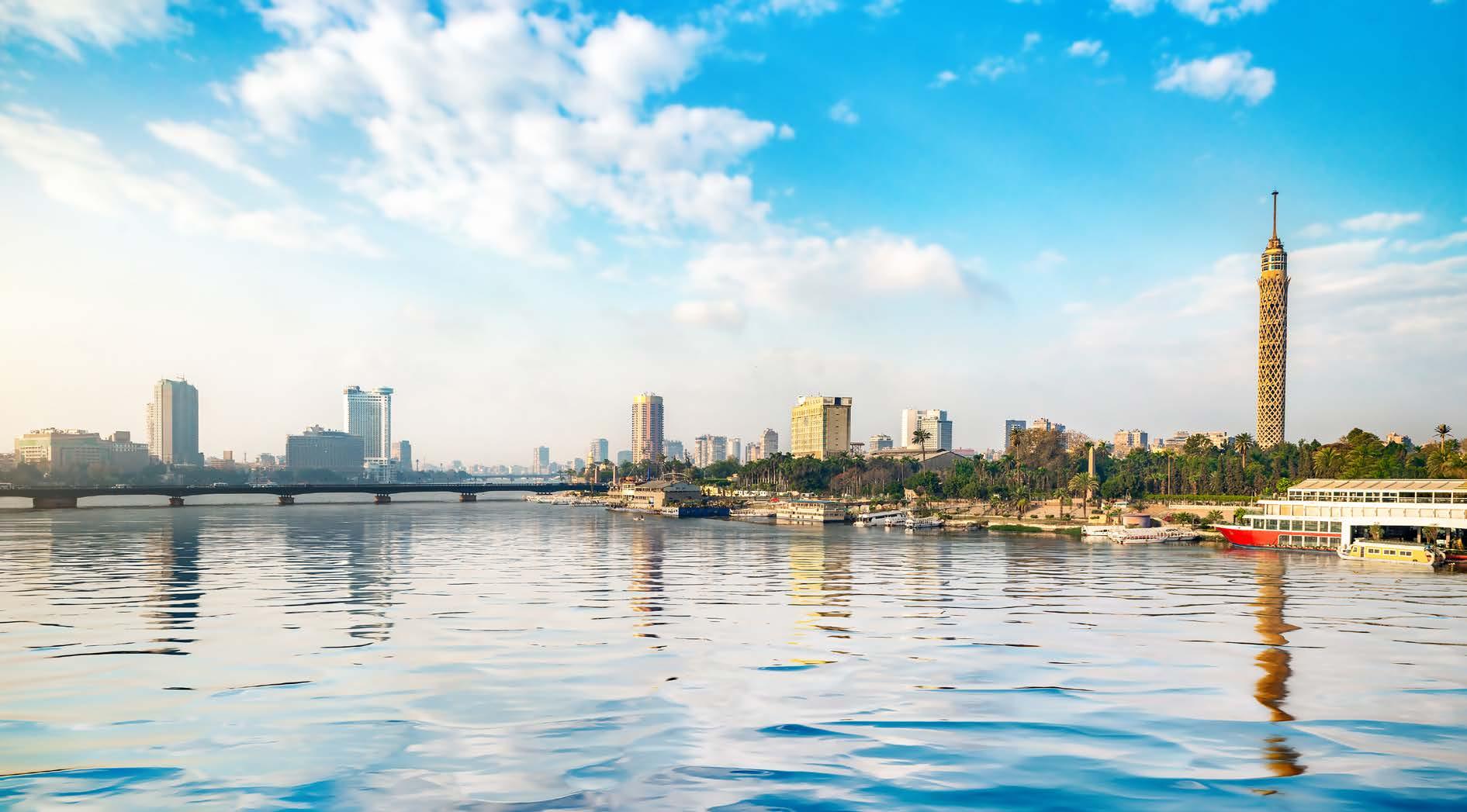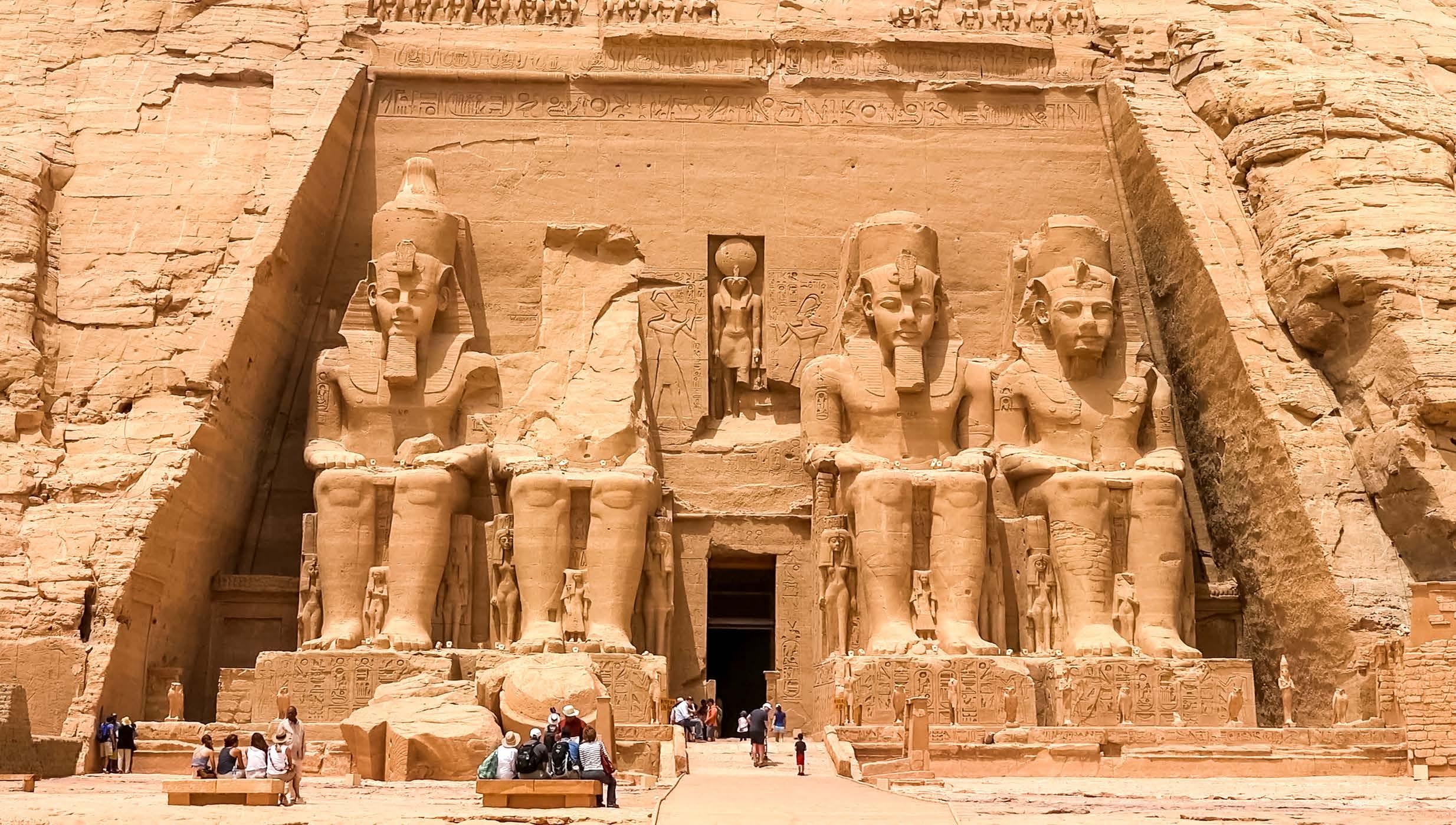
4 minute read
A Storied Journey Along the Lifeblood of Egypt
Discover masterpieces of ancient times cruising into the heart of Egypt.
By Isabelle Labrosse

Pyramids of Giza
From afar, the Nile banks appear as a dark green band meandering through a barren, golden landscape. But from up close, this seemingly simple green stretch transforms into an oasis that once was the lifeline of one of the most advanced civilizations in the ancient world. Today, the Nile lures travellers from the world over with relics of Egypt’s multilayered past set along its banks, where rural life still carries on much like it has been for centuries.

Nile River
And because of the river’s vital role in Egyptian life and culture, there’s no better way to uncover the nation’s splendours than by ship. Most river cruises offer itineraries that sail from Luxor to Aswan, with stops in ports along the way to let you enjoy a remarkable life-size history lesson. Whether you prefer getting a taste of old-world glamour sailing on a small, 16-cabin dahabiya, or indulging in modern-day comforts and luxuries on Avalon Waterways’ MS Farah – billed as Egypt’s most elite ship on the Nile – you’re sure to find an option to suit your needs.
On top of offering the convenience of having no luggage to haul around, Nile river cruises often include lectures by an Egyptologist, who will share secrets about the many treasures left by the pharaohs as you glide lazily past ancient temples and ruins, traditional feluccas and desert cliffs.

Cairo and the Nile
Along the way, you’ll uncover the history of Egypt’s heartland and the important part this storied waterway has played – and still plays – in it. Amidst the surrounding desert, the Ancient Egyptians relied on the rich soil of the floodplains for crops, which explains why most of the monuments, temples and statues that remain to this day stretch along the banks.
Even today, most of the country’s population lives within a few kilometres of the river. Cruising the Nile’s famous waters will take you into landscapes unchanged by time where you’ll have the chance to marvel at sites like the Valley of the Kings, home to underground crypts built as the final resting place of generations of New Kingdom pharaohs. This is where archeologist Howard Carter found Tutankhamun’s virtually intact tomb in 1922.

Hieroglyphics in the Valley of the Kings
If you’re intrigued by the puzzling hieroglyphics, you’ll find well-preserved examples to feed your fascination nearby in Luxor, at the temple complex of Karnak, with soaring pillars of engraved inscriptions. Another temple worth a visit is the Philae Temple, a place of worship devoted to the goddess Isis, located on an island near the Aswan Dam. Planning to explore this one-of-a-kind site at night means you’ll be able to watch an impressive sound and light show that reveals a whole different facet of the ruins.
Though river cruising is a must-do when travelling to Egypt, no journey discovering the country’s fabled history would be complete without a visit to its bustling capital, Cairo. The city’s most well-known souk, the lively Khan el-Khalili, will immerse you in a whirlwind of colours and fragrance, while dinner at the rotating restaurant of the 187-metre Cairo Tower provides panoramic views of the Egyptian capital. The city also sits at the crossroads of different religions, with some of the world’s oldest churches in Egypt within its limits, as well as the Mosque of Amr ibn al-As – the first ever built in the country – and the Ben Ezra Synagogue, in Old Cairo, dating back to the 9th century.

Gold trinkets at Khan el-Khalili in Cairo
Nothing quite compares, however, to what is perhaps the most incredible of Cairo’s sights. The Great Pyramids of Giza, the oldest and only remaining Wonders of the Ancient World, still stand tall on the west bank of the Nile River, guarded by the mythical Sphinx, another hallmark of the nation’s past, carved directly from the stone of the Giza plateau. It’s impossible not to be impressed as you stand at the base of these millennia-old man-made creations of massive limestone blocks.
Taking a camel ride around the pyramids to contemplate them as the Ancient Egyptians once did makes for an even grander experience. And there’s one more reason to visit Cairo this year. Only two kilometres from the pyramids, the long-awaited Grand Egyptian Museum is expected to open its doors in 2020, hosting more than 100,000 artifacts – 3,500 of which belonged to King Tutankhamun – that bear witness to over 7,000 years of history.

Ancient Egyptian Temple
The museum will allow visitors to get acquainted with the rich cultural heritage of this ancient civilization, while also providing the technological infrastructure to carry research activities and help preserve its precious collection. Whether you’re fascinated by the history or the lifestyle, the traditional or the modern, a cruise along Egypt’s vital artery will be forever engraved in your memory.










